Abstract
Intravenous inoculation of a group A hemolytic streptococcus caused lethal infections in all of 11 untreated monkeys. Daily intragastric administration of either 25 or 50 mg per kg per day, given in two equal morning and afternoon doses, yielded similar results in monkeys treated with cephalexin, penicillin V, and ampicillin; all eight monkeys in each therapy group survived. At dose levels of 12.5 mg per kg per day, six of eight, four of eight, and one of eight receiving cephalexin, penicillin V, and ampicillin, respectively, died. The differences observed at the lower dose level between cephalexin and ampicillin could be attributed, in part, to differences in the minimal inhibitory concentrations (MIC) of cephalexin (MIC = 0.24 μg/ml) and ampicillin (MIC = 0.01 μg/ml). The differences in results between penicillin V, which had the same MIC as ampicillin, could perhaps be attributed, in part, to shorter duration of antibacterial activity and higher protein binding of penicillin V. These studies support previous observations that cephalexin at 25 to 50 mg/kg doses is effective in severe streptococcal sepsis in monkeys.
Full text
PDF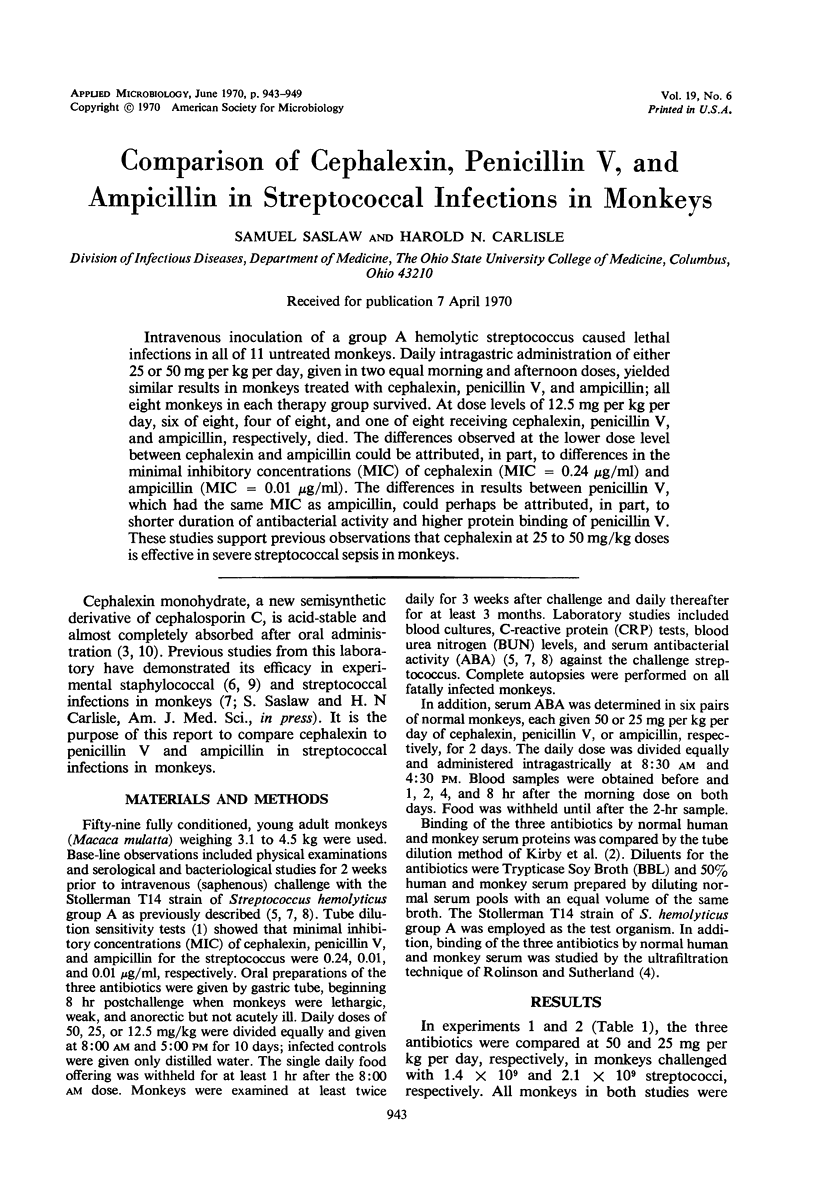

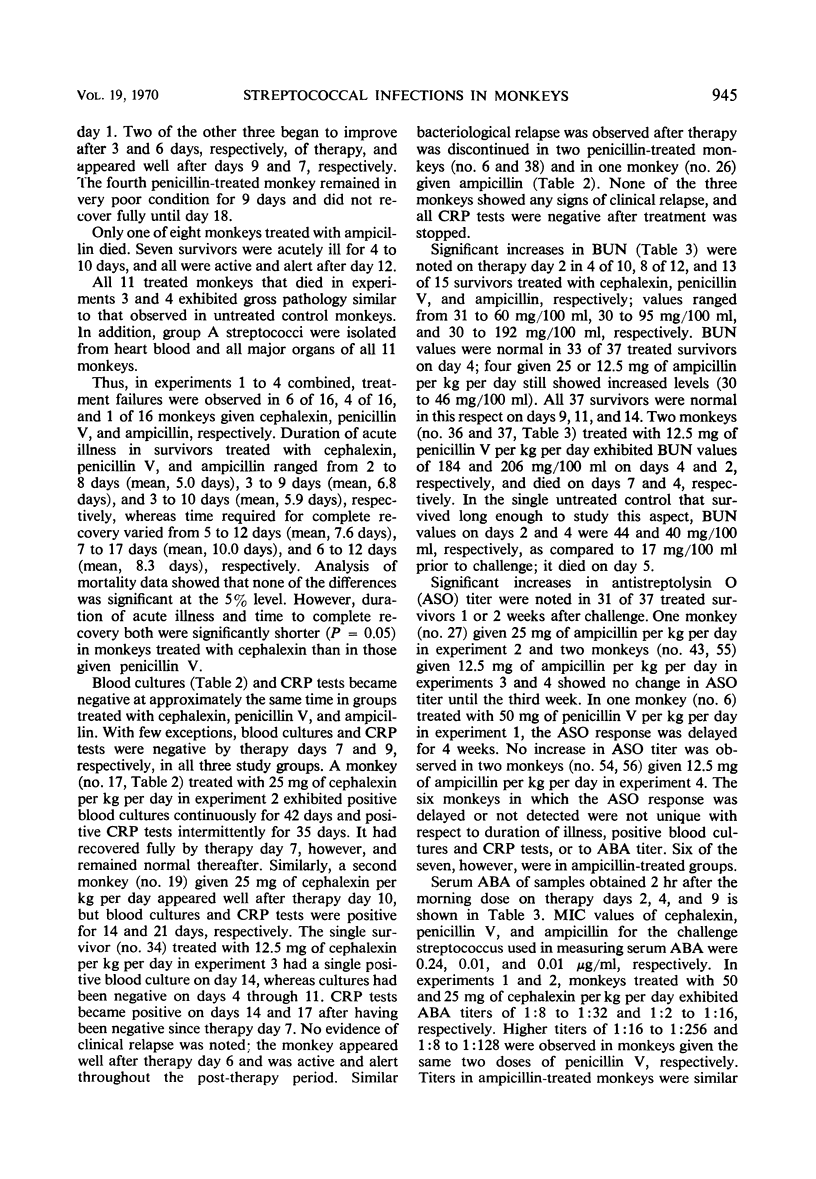
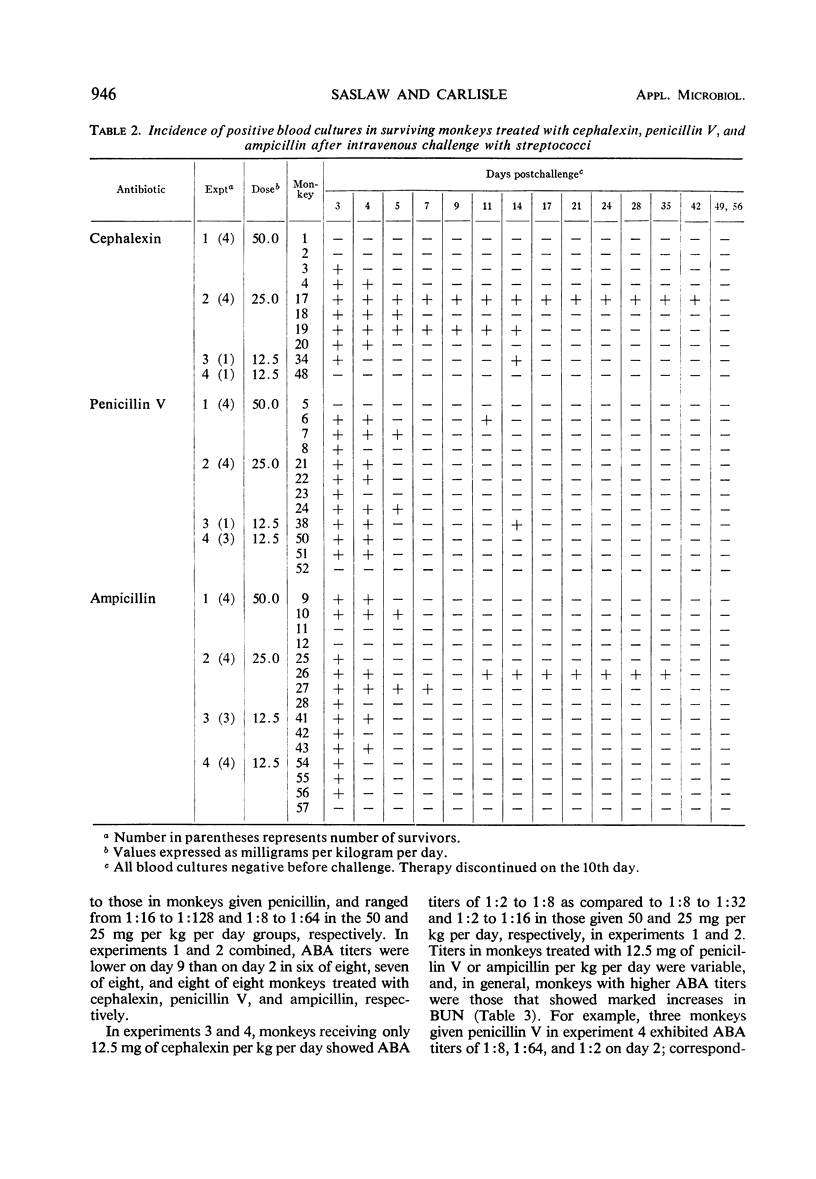
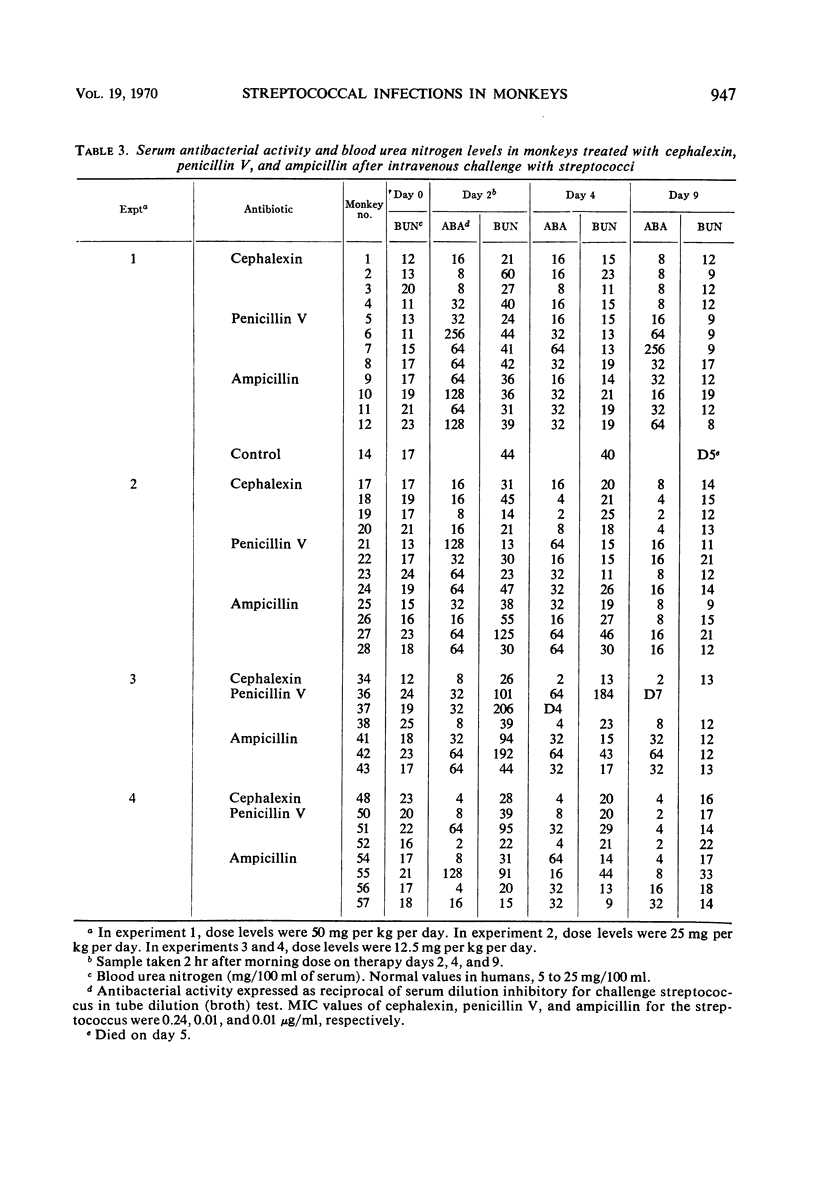
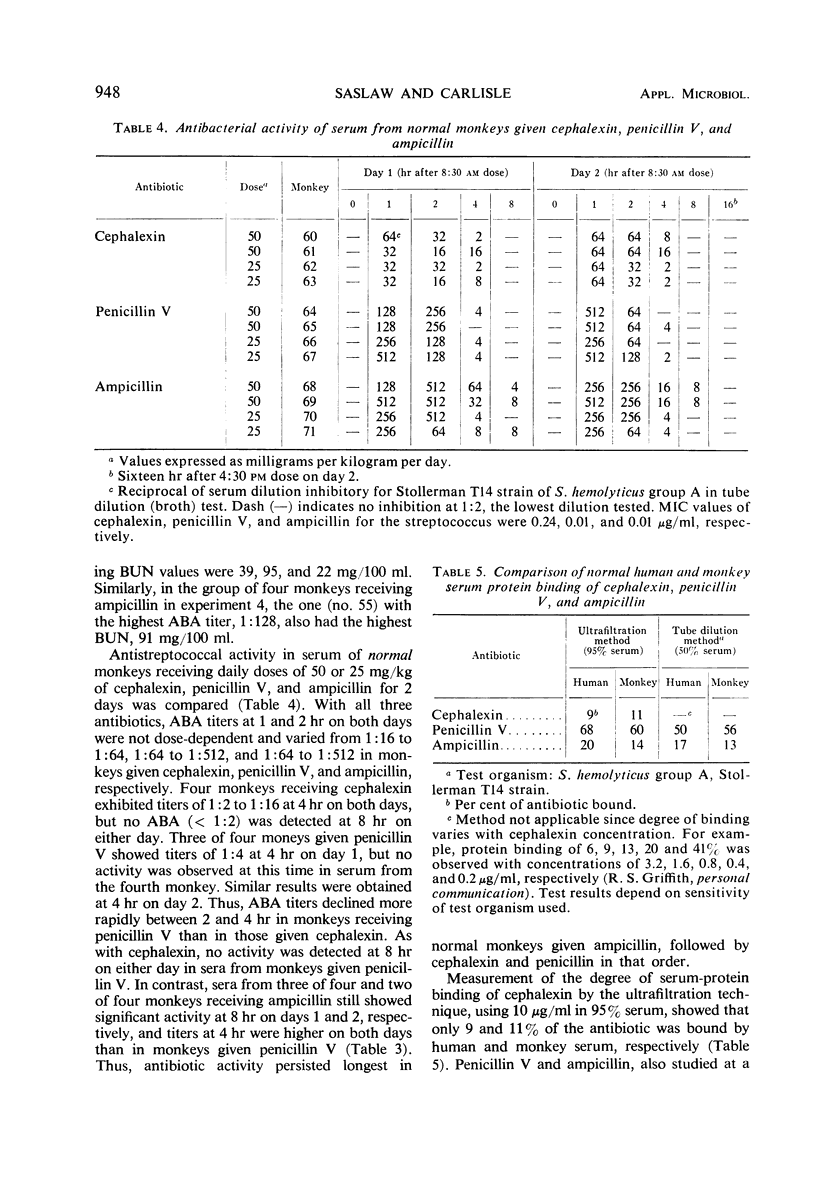
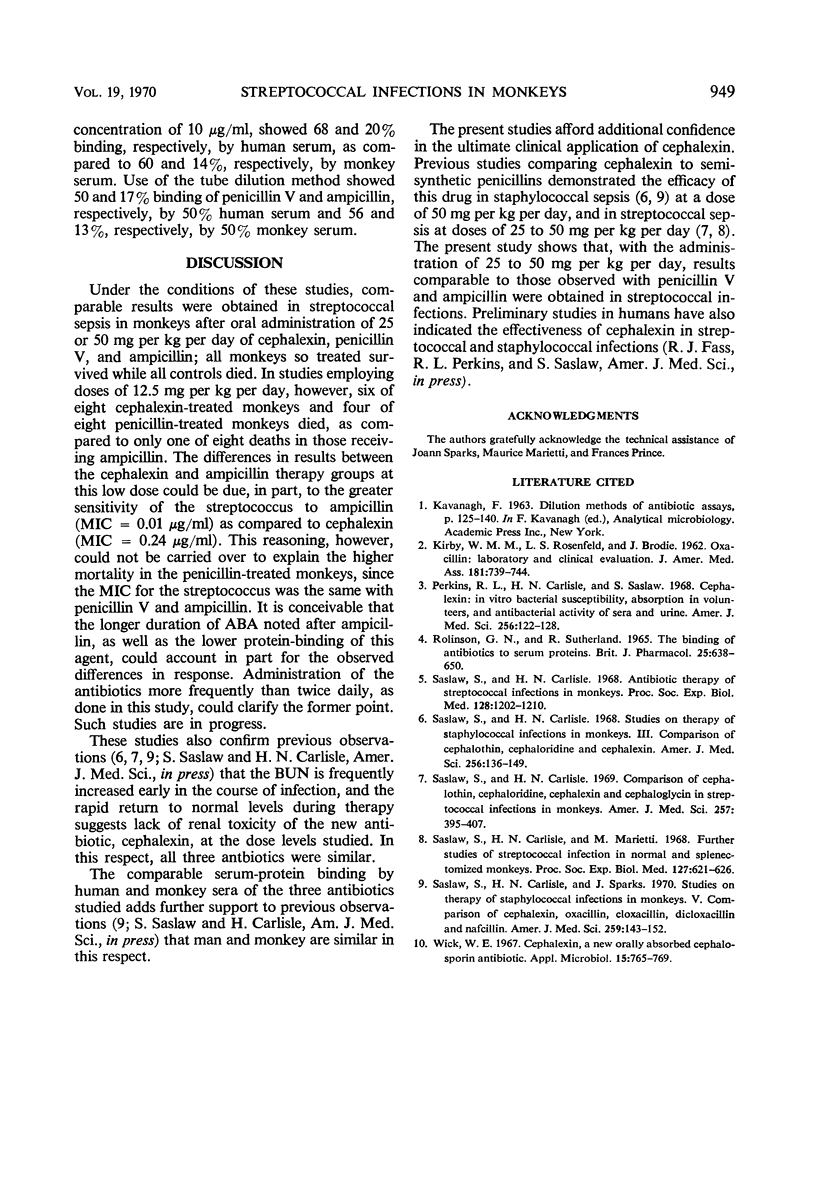
Selected References
These references are in PubMed. This may not be the complete list of references from this article.
- KIRBY W. M., ROSENFELD L. S., BRODIE J. Oxacillin: laboratory and clinical evaluation. JAMA. 1962 Sep 1;181:739–744. doi: 10.1001/jama.1962.03050350001001. [DOI] [PubMed] [Google Scholar]
- Perkins R. L., Carlisle H. N., Saslaw S. Cephalexin: in vitro bacterial susceptibility, absorption in volunteers, and antibacterial activity of sera and urine. Am J Med Sci. 1968 Aug;256(2):122–129. [PubMed] [Google Scholar]
- Rolinson G. N., Sutherland R. The binding of antibiotics to serum proteins. Br J Pharmacol Chemother. 1965 Dec;25(3):638–650. doi: 10.1111/j.1476-5381.1965.tb01788.x. [DOI] [PMC free article] [PubMed] [Google Scholar]
- Saslaw S., Carlisle H. N. Comparison of cephalothin, cephaloridine, cephalexin and cephaloglycin in streptococcal infections in monkeys. Am J Med Sci. 1969 Jun;257(6):395–407. doi: 10.1097/00000441-196906000-00006. [DOI] [PubMed] [Google Scholar]
- Saslaw S., Carlisle H. N., Marietti M. A. Further studies of streptococcal infection in normal and splenectomized monkeys. Proc Soc Exp Biol Med. 1968 Feb;127(2):621–626. doi: 10.3181/00379727-127-32757. [DOI] [PubMed] [Google Scholar]
- Saslaw S., Carlisle H. N., Sparks J. Studies on therapy of staphylococcal infections in monkeys. V. Comparison of cephalexin, oxacillin, cloxacillin, dicloxacillin and nafcillin. Am J Med Sci. 1970 Feb;259(2):143–152. doi: 10.1097/00000441-197002000-00008. [DOI] [PubMed] [Google Scholar]
- Saslaw S., Carlisle H. N. Studies on therapy of staphylococcal infections in monkeys. 3. Comparison of cephalothin, cephaloridine and cephalexin. Am J Med Sci. 1968 Sep;256(3):136–149. doi: 10.1097/00000441-196809000-00002. [DOI] [PubMed] [Google Scholar]
- Wick W. E. Cephalexin, a new orally absorbed cephalosporin antibiotic. Appl Microbiol. 1967 Jul;15(4):765–769. doi: 10.1128/am.15.4.765-769.1967. [DOI] [PMC free article] [PubMed] [Google Scholar]


